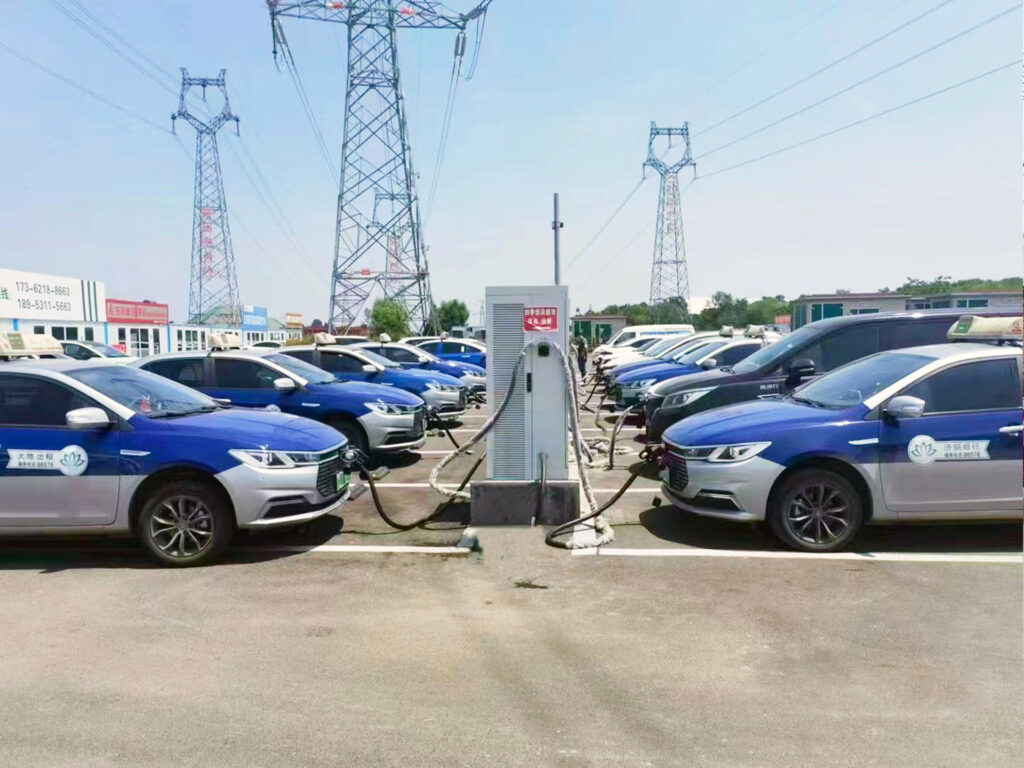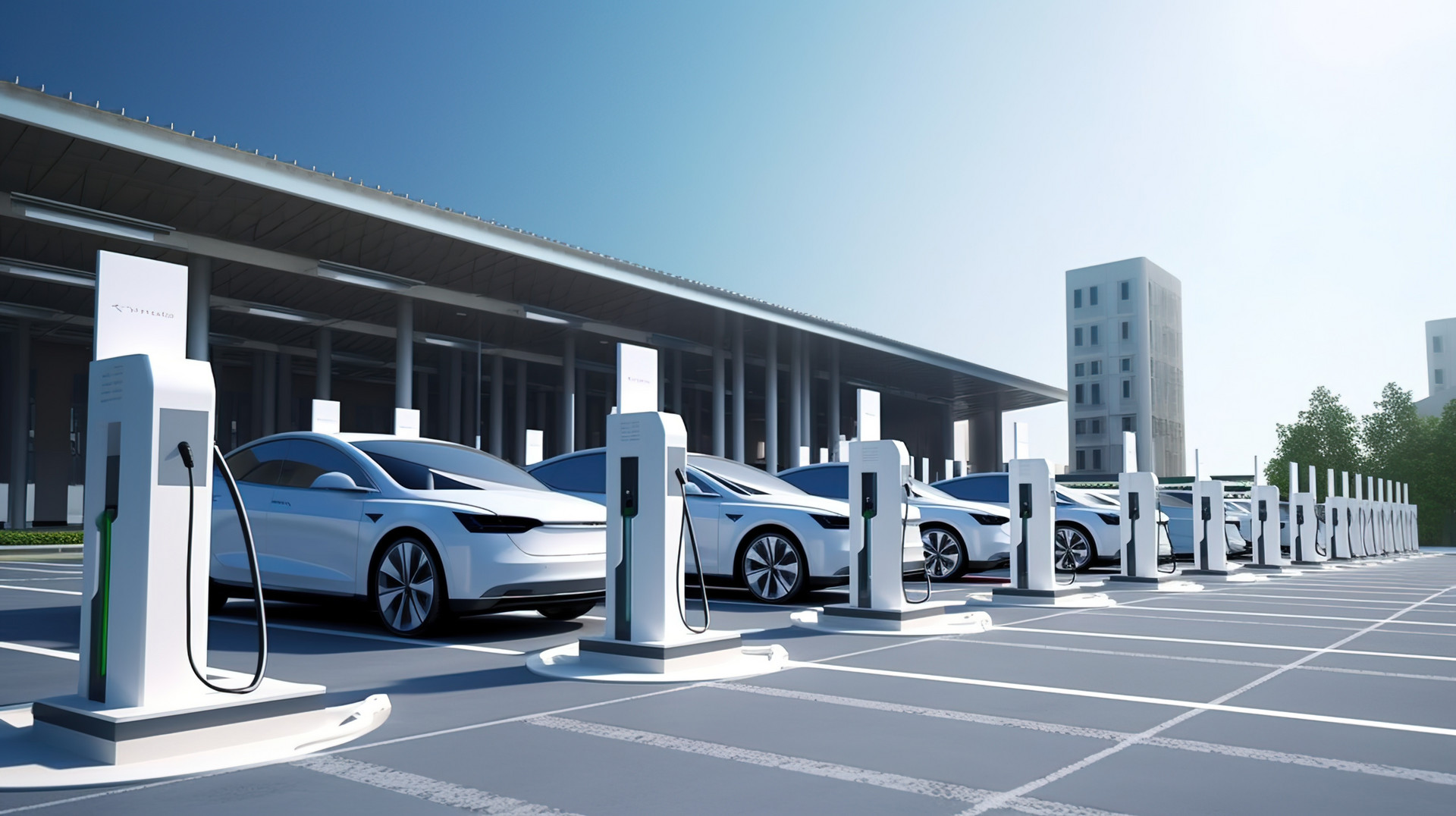Are you struggling with the high upfront costs and complexities of EV charging infrastructure? Wondering if there’s a better way to manage and monetize it?Subscription-based charging, also known as Charging as a Service (CaaS), offers a recurring fee model for access to EV charging. It covers hardware, installation, software, and maintenance, simplifying budgeting and operations for both providers and users.

The electric vehicle revolution is here, and with it comes the need for widespread, reliable charging infrastructure. But is diving into a subscription model the right move for your business? Let’s explore.
What are the Different Subscription Models for EV Charging, and Which One Fits Your Business?
Confused by the various subscription options available? Don’t know which model best aligns with your specific business needs and resources?
There are primarily three subscription models: direct ownership (provider owns everything), partnership ownership (shared costs/profits with a property owner), and fully funded (network operator funds installation with operational conditions).

Let’s break down each model to see which might be the best fit:
Direct Ownership
- Description: The CaaS provider owns, installs, operates, and maintains the entire charging infrastructure. You have complete control.
- Pros: Full control over pricing, branding, and customer experience. Capture all revenue.
- Cons: Highest upfront investment and ongoing operational responsibility. Greater risk.
- Best for: Businesses with significant capital and a desire for complete control, like established energy companies or dedicated charging network operators.
Partnership Ownership
- Description: The CaaS provider partners with a property owner (e.g., a shopping mall, hotel, or business park) to share the costs, responsibilities, and profits.
- Pros: Reduced upfront investment and shared operational burden. Access to prime locations.
- Cons: Shared revenue and potentially less control over certain aspects. Requires strong partnership agreements.
- Best for: Businesses looking to expand into strategic locations without bearing the full financial burden, like smaller charging network operators partnering with retail chains.
Fully Funded
- Description: A large network operator funds the installation of the charging stations. There are conditions and agreements about the operations.
- Pros: Minimal Investment
- Cons: Less control
- Best For: Large companies
Mobile EV Charging and Wireless Options.
- Description: Mobile charging provides on-demand service. Wireless charging removes the need for cables.
- Pros: Convince.
- Cons: More investment
- Best For: Companies looking for cutting-edge offerings.
Choosing the right model depends on your financial resources, risk tolerance, and long-term goals. As someone deeply involved in the manufacturing side of EV chargers in China, I’ve seen firsthand how crucial it is to select a model that aligns with your operational capabilities and market position.
How Can Subscription Charging Boost Revenue and Customer Loyalty?
Worried about inconsistent income from your EV charging infrastructure? Want to build a loyal customer base that keeps coming back?
Subscription charging provides a predictable, recurring revenue stream and fosters customer loyalty by offering a convenient, reliable service. Satisfied subscribers are less likely to switch providers.

Recurring Revenue
- Predictable Income: Unlike one-time sales or pay-per-use models, subscriptions provide a steady, predictable cash flow. This simplifies financial planning and attracts investors.
- Scalability: As your subscriber base grows, your revenue grows proportionally. This is particularly advantageous in the rapidly expanding EV market.
Customer Loyalty
- Convenience and Reliability: A well-managed subscription service provides a hassle-free charging experience, encouraging repeat usage.
- Exclusive Benefits: Consider offering perks to subscribers, such as discounted charging rates, priority access, or bundled services.
- Reduced “Range Anxiety”: Knowing they have reliable access to charging reduces a major concern for EV drivers, fostering loyalty to your service.
Additional Revenue Opportunities
- Data-Driven Optimization: Subscription services generate valuable data on charging habits. This data can be used to:
- Optimize charging schedules to minimize energy costs.
- Implement dynamic pricing (adjusting rates based on demand).
- Offer targeted promotions and services.
- Partnerships: Collaborate with local businesses to offer bundled services (e.g., discounts at nearby restaurants or shops for subscribers).
From my experience at Jiangsu Tanxun New Energy Technology Co., Ltd., I can tell you that understanding customer behavior is key. Subscription models provide that insight, allowing you to tailor services and maximize revenue.
What are the Operational Costs and Challenges of Implementing a Subscription Service?
Concerned about the ongoing expenses and potential headaches of running a subscription-based charging service?
Operational costs include electricity, maintenance, software platform fees, customer support, and potential hardware upgrades. Challenges include competition, utilization rates, and technological obsolescence.

Let’s break down the costs and challenges:
Operational Costs
- Electricity: This is a major ongoing expense. Strategies to minimize electricity costs include:
- Time-of-Use Pricing: Encourage charging during off-peak hours when electricity rates are lower.
- Renewable Energy Integration: Consider using solar or wind power to reduce reliance on the grid.
- Smart Charging: Optimize charging schedules to avoid peak demand charges.
- Maintenance: Regular maintenance is essential to ensure charger uptime and longevity. This includes:
- Preventative maintenance (inspections, cleaning).
- Repairs and replacements.
- Software updates.
- Software Platform Fees: Most CaaS providers use a software platform to manage charging, billing, and customer support. These platforms typically charge a recurring fee.
- Customer Support: Providing responsive and helpful customer service is crucial for subscriber retention.
- Cybersecurity It is important to offer a secure charging environment.
Challenges
- Competition: The EV charging market is becoming increasingly crowded. Differentiation is key.
- Utilization Rates: Profitability depends on how often your chargers are used. Strategic location is paramount.
- Technological Obsolescence: EV charging technology is evolving rapidly. Be prepared for potential upgrades.
- Compatibility Issues: Ensure your chargers are compatible with a wide range of EV models.
At our factory, we focus on producing high-quality, low-maintenance chargers to help mitigate these operational costs. We understand that reliability is crucial for the success of any subscription-based service.
Is Subscription-Based Charging Right for Your Specific Business Case?
Unsure if a subscription model aligns with your overall business strategy and target market?
Subscription-based charging is best suited for businesses seeking recurring revenue, customer loyalty, and scalable growth. It’s particularly attractive for public charging operators, businesses with EV fleets, and commercial properties.

Consider these factors:
Your Target Market
- Public Charging Operators: Subscription models are a natural fit for businesses focused on providing public charging services.
- EV Fleets: Businesses with electric vehicle fleets (delivery, transportation, etc.) can benefit from predictable charging costs and simplified management.
- Commercial Properties: Offering EV charging as a subscription amenity can attract tenants and increase property value.
- Residential Complexes: While less common, subscription models can work for multi-unit dwellings with shared charging infrastructure.
Your Business Goals
- Recurring Revenue: If predictable income is a priority, subscription models are ideal.
- Customer Loyalty: If building long-term customer relationships is important, subscriptions can help.
- Scalability: If you plan to expand your charging network, the subscription model’s inherent scalability is advantageous.
Your Resources
- Financial Capital: Assess your ability to invest in the upfront costs of infrastructure (if pursuing a direct ownership model).
- Operational Capabilities: Do you have the resources to manage the ongoing operations of a subscription service?
In my role, I’ve worked with numerous businesses implementing various charging solutions. I always emphasize the importance of aligning the chosen model with the company’s specific capabilities and long-term vision.
What is the ROI of Subscription-Based EV Charging Compared to Other Models?
Wondering how the financial return of a subscription model stacks up against traditional pay-per-use or one-time sale approaches?
The ROI of subscription-based EV charging can be higher than other models due to recurring revenue, increased customer lifetime value, and potential for data-driven optimization. However, it depends on utilization rates and effective cost management.

Factors Influencing ROI
- Utilization Rates: Higher utilization (more charging sessions) directly translates to higher revenue and faster ROI.
- Pricing Strategy: Setting competitive yet profitable subscription prices is crucial.
- Operational Efficiency: Minimizing operational costs (electricity, maintenance, etc.) maximizes profitability.
- Customer Acquisition Cost: The cost of acquiring new subscribers impacts overall ROI.
- Customer Lifetime Value: Subscribers typically have a higher lifetime value than pay-per-use customers due to recurring payments.
Comparing to Other Models
- Pay-Per-Use: While pay-per-use can generate immediate revenue, it lacks the predictability and loyalty of subscriptions.
- One-Time Sale: Selling charging hardware outright provides a one-time payment but no ongoing revenue stream.
A well-structured subscription model, combined with strategic location and effective marketing, can yield a strong ROI. It’s about building a sustainable, long-term business.
How to start a subscription plan step by step?
Ready to launch your own EV charging subscription service but don’t know where to begin?
1. Market Research 2.Choose a Business Model 3. Secure Funding 4. Select Hardware and Software. 5. Develop a Pricing Strategy. 6. Install and Test. 7. Market Your Service. 8. Provide Excellent Customer Support.

Here’s a step-by-step guide:
- Market Research: Conduct thorough market research to identify your target audience, competition, and optimal locations.
- Choose a Business Model: Select the subscription model that best suits your resources and goals (direct ownership, partnership, or other variations).
- Secure Funding: Determine your funding needs and explore options (self-funding, loans, investors, government incentives).
- Select Hardware and Software: Choose reliable, high-quality charging equipment and a robust software platform to manage your subscription service. Our company offers OEM/ODM services.
- Develop a Pricing Strategy: Create tiered subscription plans based on charging speed, usage, or other factors. Consider offering a free trial or introductory discounts.
- Install and Test: Install the charging infrastructure and thoroughly test the system to ensure everything is working correctly.
- Market Your Service: Promote your subscription service through online channels, partnerships, and local outreach.
- Provide Excellent Customer Support: Offer responsive and helpful customer service to retain subscribers and build a positive reputation.
- Make sure to follow all local guidelines.
Conclusion
Subscription-based EV charging is a promising venture, but success hinges on smart planning, strategic location, and a customer-centric approach,As a premium EV charging product manufacturer, TX offers custom-designed solutions that are perfectly aligned with your business needs. Choose reliable hardware, optimize operations, and watch your business thrive in the electrifying future!

